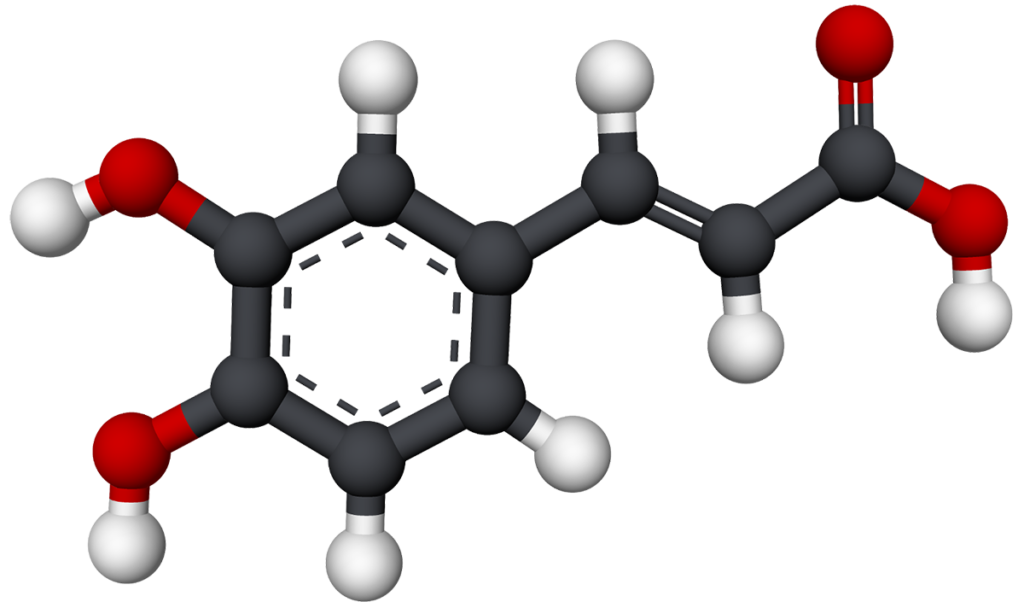Caffeic acid is a natural compound found in coffee and other plant-based foods. It is a type of hydroxycinnamic acid that is produced by the plant as a defense mechanism against pests and environmental stress.
In coffee, caffeic acid is formed during the roasting process, which is why it is found primarily in roasted coffee beans rather than in raw coffee beans.
It is one of the most abundant phenolic compounds in coffee, and it contributes to the flavour, aroma, and colour of the coffee. Caffeic acid is thought to contribute to astringency.

According to Wikipedia, caffeic acid is “an organic compound that is classified as a hydroxycinnamic acid. This yellow solid consists of both phenolic and acrylic functional groups. It is found in all plants because it is an intermediate in the biosynthesis of lignin, one of the principal components of woody plant biomass and its residues.”
An article in TechRadar explains how caffeic acid also makes makes semiconductors work faster.
Do you have a term or definition you’d like us to add to the glossary? Let us know using this form.


